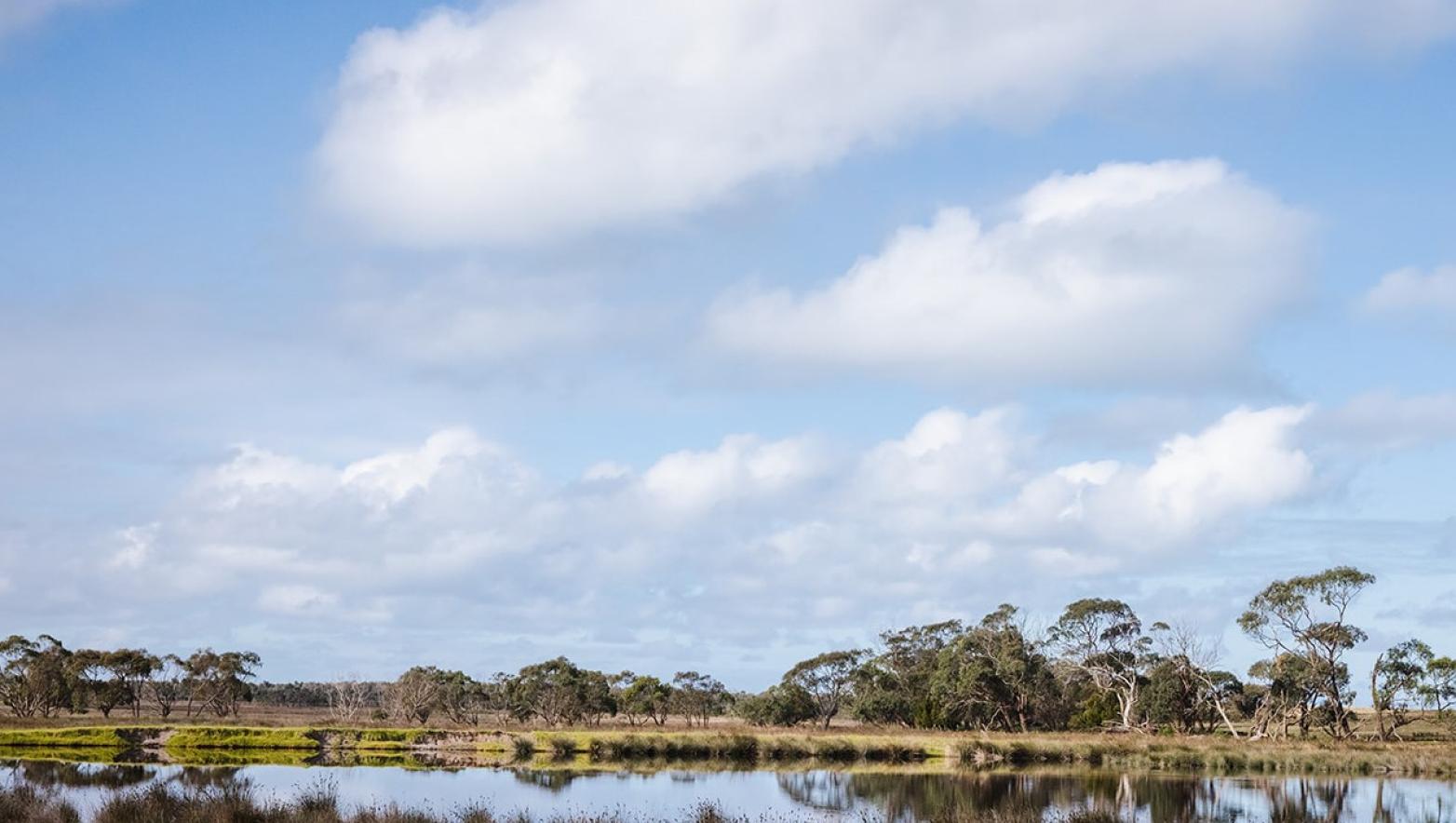
Dutson Downs hosts a diverse and productive mix of waste management, agriculture and environmental assets. The site spans about 8,500ha and is home to our commercial businesses Gippsland Regional Organics and Gippsland Regional Agribusiness, as well as significant native plants and animals.
More than half of the property (almost 5000ha) is native vegetation. These areas include woodlands, heathlands, scrubs, wetlands and grasslands. There is significant native species habitat in the site's sand dunes and swales (Geoscience Australia, 2015).
The property is home to some of the world's rarest, most threatened flora and fauna - including the Pookila, Green and Golden Bell-frog, Wellington Mint-bush, Dwarf Kerrawang, Trailing Hop-bush and Metallic Sun-orchid.
Many of these species are not found in high numbers, or at all, elsewhere in the region. The property provides an important refuge for these species.
Almost 400ha of native vegetation is permanently protected and managed under formal agreements. We plan to further expand these protected areas in the future.
These protected areas are home to 10 threatened flora species of national significance, including orchids, herbs, sedges, shrubs and trees and five threatened fauna species, including frogs, mammals and birds.
As part of the Landowner Agreements, we're planning the following ongoing works over the next 10 years:
- Eradication of weeds including Spiny Rush, Spear Thistle and African Boxthorn.
- Control of pest animals including foxes, rabbits and deer.
- Protection of the site by maintaining and installing fences for exclusion of stock and unauthorised access.
